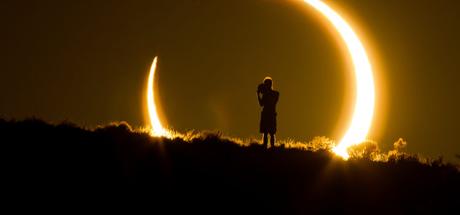
On August 21, the Great American Solar Eclipse will dominate the skies. For a brief moment, the sun will be totally eclipsed by the moon as both pass over the U.S.
To see the total eclipse, you will need to be within 60 - 70 miles of the path. As the sun and moon pass over a certain location, the eclipse is only visible for two minutes. With such a brief window of opportunity to see this rare event, it is important to plan ahead.
Whether you plan to make a trip out of the event or happen to live within the path of the total eclipse, here are tips for the best (and safest) viewing strategy:
Prep Your Travel Plans
It is important to know that not everyone lives within the path of totality - meaning not everyone will see the total eclipse. Around 12.25 million Americans live within the path but most live within a day's (or two) drive to the path.
If you're planning to travel to a spot within the path of totality, look into lodging or how you'll get there ahead of time. A lot of people may be traveling to where you also plan to view the eclipse, so hotels and campsites could fill up before the big day. Traffic could also be an issue on the day of the eclipse. Especially in certain areas of the path of totality, be sure to give yourself plenty of time if driving to a special spot.
Your plan should allow you to be flexible and mobile. Even if you're able to locate a perfect spot for viewing, the weather is not always the most reliable. Check the weather in the days and even hours leading up to the eclipse to make sure your perfect spot stays perfect. Pop up storms or even random clouds in the sky could appear when it comes time for the eclipse to pass over.
Get the Right Specs
As you probably heard a lot as a child, it is important to never look directly into the sun. Looking at the sun for the eclipse this month is no different.
Looking directly at the sun, even during the eclipse, can cause eye damage or even blindness. Luckily, there are ways to safely view this rare event.
NASA recommends investing in "solar-viewing glasses" or "eclipse glasses." These lenses are built with special-purpose solar filters that make them hundreds of times darker than other lenses. Homemade lenses and sunglasses are not safe for viewing the sun because they do not block out enough sunlight.
NASA recommends getting glasses from manufacturers such as:
- Rainbow Symphony
- TSE 17
- Baader Planetarium (Astro Silver/Gold Film only)
- Thousand Oaks Optical
- American Paper Optics
However or wherever you plan to view the eclipse, be sure to plan ahead so you can kick back and enjoy this rare sight.

